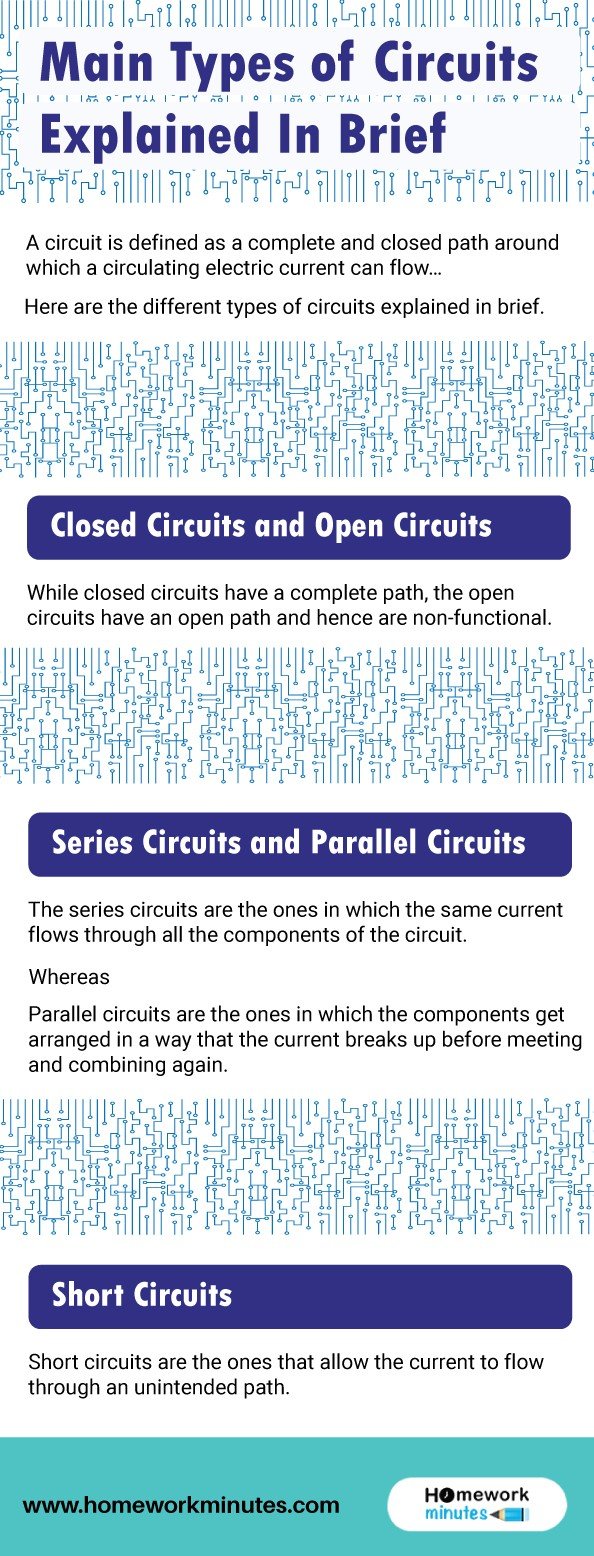A circuit is defined as a complete and closed path around which a circulating electric current can flow. Before knowing all about the main types of circuits, here is a brief guide on what these circuits are. It is an organization of the elements that serve the purpose of storage, transmission, and conversion of the energy. In the process, the energy enters the circuit from a source and leaves it through a sink. During the conversion, the electrical energy gets converted to thermal, chemical, electromagnetic, and mechanical forms. Here are the main types of circuits that play different roles as per their characteristics.
Also read:-
Types of Circuits
Closed Circuits and Open Circuits
While closed circuits have a complete path, the open circuits have an open path and hence are non-functional.
Series Circuits and Parallel Circuits
The series circuits are the ones in which the same current flows through all the components of the circuit. The formula for this circuit is V = V1 + V2 + V3 and R = R1 + R2+ R3
An example of series circuits is the Christmas lights. In case of damage to the master bulb, the current ceases to flow, and the lights won’t get switched on.
Whereas
Parallel circuits are the ones in which the components get arranged in a way that the current breaks up before meeting and combining again.
An example of a parallel circuit is the wiring in a house. There is a single electric power source that tends to supply current to all the other appliances with the same voltage. So, in case of light failure in one of the objects, other appliances still work.
Differences between the two types of circuits include:-
Circuit In Series | Circuit In Parallel |
| Single current pathway | Multiple current pathways |
| The similar current runs through all the components | The potential difference across all the components is the same |
| The sum of the potential dips across each component = emf of the source | The sum of the currents flowing into any point in the circuit = sum of the currents flowing out of that point |
Short Circuits
Short circuits are the ones that allow the current to flow through an unintended path. When the voltage drops to almost zero, the entire system goes down.
If you need experts to help you with your physics or any other subject of your expertise, seek instant help from us. We have a team of professionals who can provide you the best assistance 24*7. Chat with us now.


